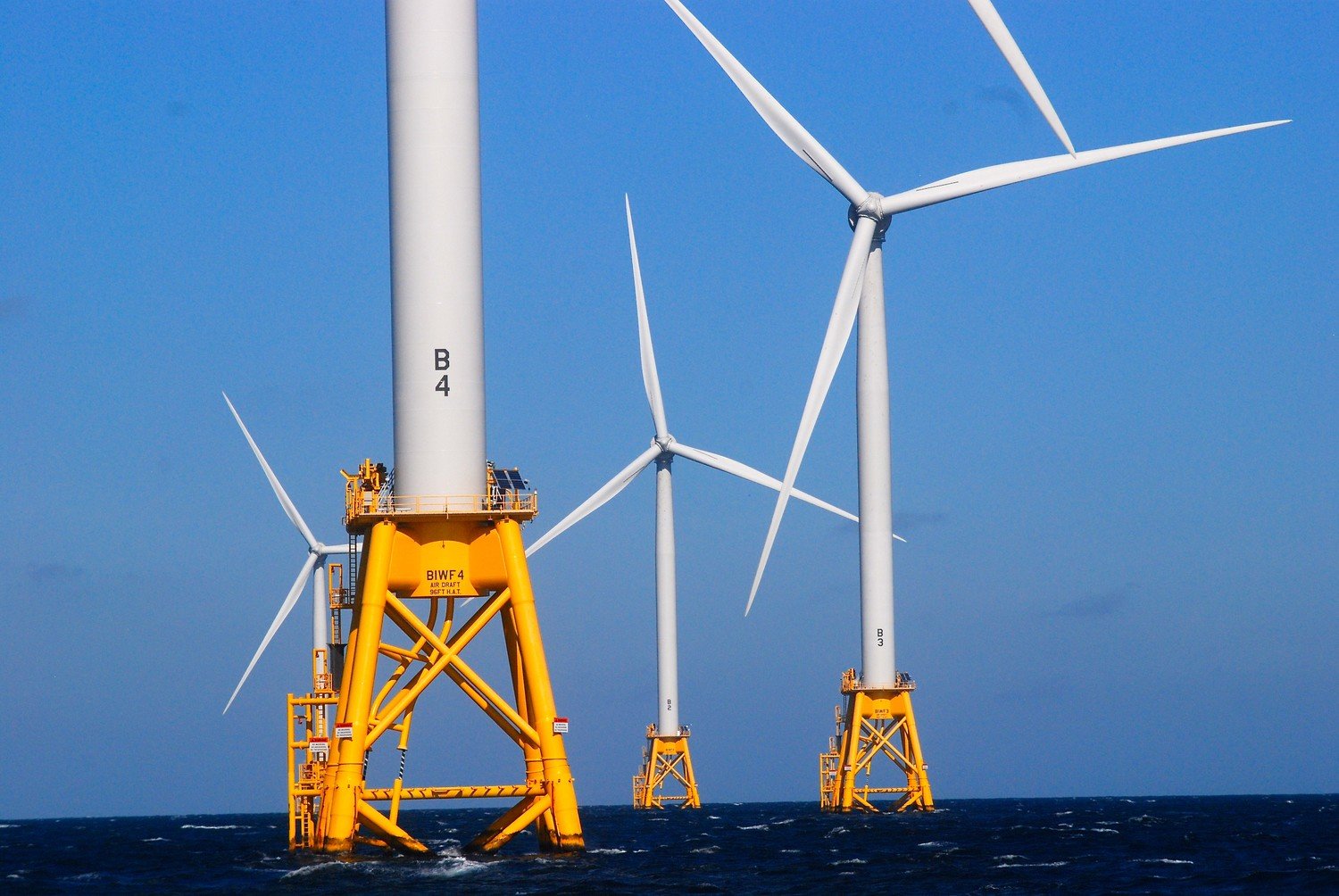Wind farm, cable planned for South Shore
At Long Island Association meeting, company executives present offshore proposals
One offshore wind developer is proposing a wind farm that, if approved, would span 80,000 acres in the Atlantic Ocean off Long Island’s South Shore, with its closest point to land being 14 miles south of Long Beach and Jones Beach.
Another offshore wind company is planning a 400-megawatt to 1,200-megawatt wind farm 85 miles off Montauk Point, with an undersea electric transmission cable that would run from the turbines to Jones Beach, and from there up the Wantagh Parkway to a substation in Melville. Along the parkway, the underground cable would run parallel to an existing high-voltage transmission line that extends from Sayerville, N.J.
A third company is proposing a wind farm 35 miles off the coast of Long Island’s South Fork to supply power to the East End.
Executives from the three companies proposing the wind farms presented their plans to a receptive audience at a Long Island Association meeting in Melville on March 29. The LIA, a nonprofit, nonpartisan business advocacy group, supports offshore wind, said Kevin Law, LIA’s president and chief executive officer. The LIA, he said, “is really behind the offshore wind community.”
Long Island faces a host of “energy challenges,” Law said, but noted that they can be seen as “economic development opportunities.” The offshore wind industry, he and the company executives said, has the potential to create thousands of jobs locally, from engineers to electric linesmen, and inject tens of millions, if not hundreds of millions, of dollars into the Island’s economy, including funding for job training centers in Nassau and Suffolk counties.
Each project is pending federal, state and local regulatory approvals.
Lars Thaaning Pedersen is chief executive officer of the Boston-based Vineyard Wind, one of the two companies joining in the the Liberty Wind project 85 miles off Montauk. The second is Anbaric, the same company that developed the transmission cable from New Jersey to Long Island. Vineyard Wind is owned equally by Denmark-based Copenhagen Infrastructure Partners and Avangrid Renewables, of Portland, Oregon.
“Three years ago,” Pedersen said, offshore wind “was hardly on anyone’s radar.” By 2030, the prediction is that it will become a $70 billion industry in the U.S., with potential investment in New York projects as high as $30 billion to $35 billion. “It’s definitely taking off,” he said.
Gov. Andrew Cuomo has set a goal of producing half of New York’s energy from renewable sources such as wind, solar and geothermal by 2030. He is calling it the “50 by 30” initiative. The governor has said he sees offshore wind as a key component of reaching what many have described as an ambitious goal. Cuomo would like to produce as much as 9,000 megawatts of power from offshore wind — enough to light roughly 6.75 million homes — by 2035.
Unlike coal, oil and natural gas power plants, wind farms are “carbon-neutral,” meaning they do not produce carbon dioxide, the chief driver of human-caused climate change, as they generate electricity.
With the state behind offshore wind, Law said, there are now a host of “international, multi-billion-dollar companies who want to invest in our region.”
Equinor Wind US, in Stamford, Conn., is proposing construction of a wind farm capable of powering up to a million homes in the waters off Long Beach and Jones Beach. Jonathan Forde, Equinor’s commercial manager, emphasized that only a “tiny” portion of the wind farm would be located as close as 14 miles from the Island. Other sections of it would be as far out as 20 and 26 miles.
Norway-based Equinor, which has developed wind, natural gas and oil projects around the globe, is planning wind farms for New York, New Jersey and Massachusetts, Forde said, adding, “New York is the perfect place to start.”
A 40-turbine wind farm was previously planned 3.5 miles south of Jones Beach, but Law, who was LIPA’s president and CEO in 2007, killed the project that year amid rising cost projections and vocal opposition from an ad hoc citizens group called Save Jones Beach. The group, a consortium of environmentalists, birdwatchers and beachgoers, said the turbines would be visible from the beach, and their blades could harm migratory birds as they rotated.
There is no indication that Equinor’s project, if constructed, would be visible from the beach.
Offshore wind development is slow-going in the U.S. because of a strict, multi-layered regulatory approval process, said Clint Plummer, head of market strategies and new projects in the U.S. for Denmark-based Orsted, which last fall acquired Deepwater Wind, the company behind the five-turbine wind farm off Block Island, R.I. — the nation’s first offshore wind farm. Orsted and New England-based Eversource are the companies behind the proposed 800-megawatt Sunrise Wind project, off the South Fork.
The Block Island project was first proposed in March 2008 and not completed until December 2016. In terms of regulation, Plummer said, “we deal in ambiguity in the U.S.”

 45.0°,
Partly Cloudy
45.0°,
Partly Cloudy 





